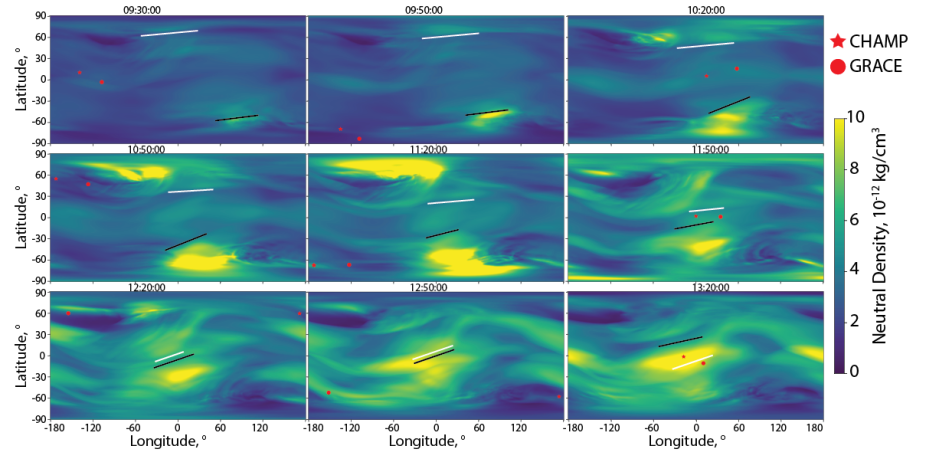During geomagnetic storms, increased activity within the geospace environment causes large scale plasma convection to occur and electrons to precipitate into the upper atmosphere. The enhanced heating of the thermosphere by the plasma convection and electron precipitation can produce large perturbations in the neutral density. These neutral density perturbations propagate away from their point of origin, oftentimes traveling to the equator and into the other hemisphere. Here, simulation results using a high resolution coupled geospace model that includes a magnetosphere, inner magnetosphere, ionosphere, and thermosphere model show that neutral density perturbations generated in one hemisphere can propagate far enough to interact with those in the other hemisphere. The intersection of two or more perturbations produce regions of larger neutral density perturbations. The high resolution coupled geospace model performs significantly better than the standalone model when compared to observations of neutral density by low altitude spacecraft. A significant fraction of the observed neutral density perturbations is captured by the coupled model, especially those at low latitudes. Proper simulation and understanding of storm-time neutral density perturbations is imperative to space weather prediction as neutral density perturbations can greatly affect satellite drag.

Snapshots that follow the neutral density perturbation observed by CHAMP (star) and GRACE (circle) at low latitude at 13:20 UT. The approximate location of the wavefront for TADs that intersect near CHAMP’s position at 13:20 UT are indicated by a line white line for the northern hemisphere and black line for the southern hemisphere.